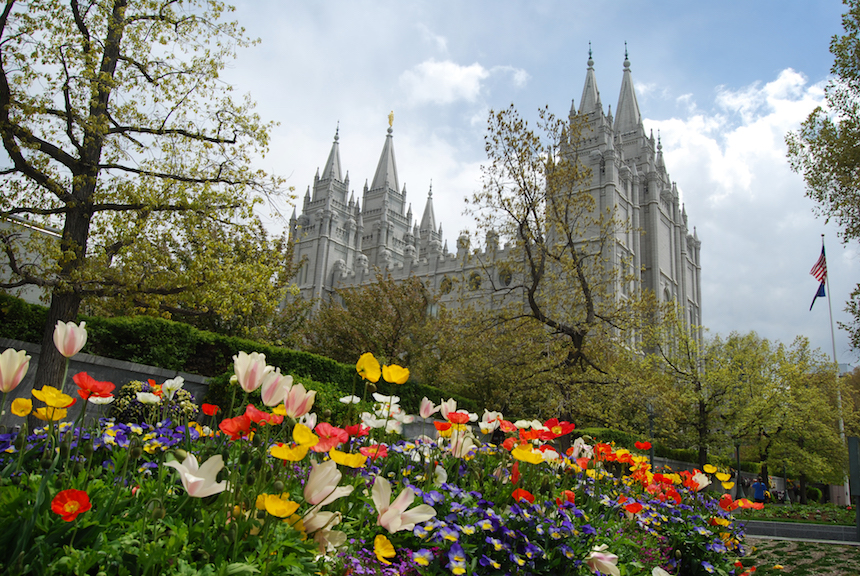Josh Furlong, KSL.com
SALT LAKE CITY — Like many religions around the world, the LDS Church relies on donations from its members to support the day-to-day operations of a growing church — a principle it calls “the law of tithing.”
In an article published by LDS Church Presiding Bishop Gérald Caussé Tuesday, KSL.com reports he said the donations act as the “foundation of the financial stability of the church.”
The article was accompanied by a statement and Q & A released on Mormon Newsroom that addressed topics such as “Why doesn’t the church publish its financial information?” and “What controls are in place to prevent the misuse of funds?” Both pieces discuss how The Church of Jesus Christ of Latter-day Saints manages its finances, including some of the for-profit entities it owns.
“Some people occasionally describe today’s church as a powerful and prosperous institution,” Bishop Caussé writes. “This may be true, but the strength of the church cannot be measured by the number or beauty of its buildings or by its financial and real estate holdings.”
Instead, the church should be seen as “as millions of faithful members in thousands of congregations across the world following Christ and caring for each other and their neighbors,” he said.
The “sacred funds” of the church are managed by the First Presidency, Quorum of the Twelve Apostles and Presiding Bishopric in what is called the Council on the Disposition of the Tithes, Bishop Caussé said. However, budgets and other funds are managed by the Budget and Appropriations Committee, which acts as a subcommittee to the previously mentioned council.
The guiding principles of the councils are such that “expenditures will not exceed forecasted revenue” and that “the budget for operating expenses will not increase at a more rapid rate than anticipated tithing contributions.” He added that the church is “not a financial institution or a commercial corporation.”
Over the years, the church has stressed to its members the need for each to become financially independent and “build a financial reserve by regularly saving (a portion of their income).” The church operates similarly with its own accounts, and sets aside “a portion of its revenues each year to prepare for any possible future needs,” Bishop Caussé said.
Any additional funds, Bishop Caussé said, are added to various “investment reserves,” which include “stocks and bonds; majority interests in taxable businesses (some of which date to the church’s early Utah history); commercial, industrial and residential property; and agricultural interests.” The funds are managed by “a professional group of employees and outside advisers.”
Any excess funds “are not left idle in nonproductive bank accounts but are instead employed where they can produce a return,” Bishop Caussé said.
He pointed to the possibilities of accessing reserve funds to continue the mission and operations of the church in “times of hardship,” or to help fund the future growth of the church.
The LDS Church, like many other religious organizations, holds a tax-exempt status; however, the church also “holds business interests that help in accomplishing its mission,” the Mormon Newsroom statement said. Even where nonprofit organizations and churches are exempt from tax, “the Church pays taxes on any income it derives from revenue-producing activities that are regularly carried on and are not substantially related to its tax-exempt purposes.”
It added that the church pays taxes on its net income and property taxes for all properties not used for “religious, educational or charitable purposes.”
In short, the church “and its affiliated entities pay taxes and other governmental levies as required by the laws of each country in which the church functions,” the statement said.
The statement pointed to City Creek Center in downtown Salt Lake City, which is owned by the church, as an example of an investment the church made. Its presence “enhanced the environs of Temple Square” and provided a “commitment” to the city, the Mormon Newsroom statement said. It also gave the area an economic boost in a down time and brought visitors to the city, according to the statement.
The intent of the church and its financial responsibility is to be independent — to not be in debt to other parties that it can’t control, Bishop Caussé said. This is also the same principle the church teaches its members about financial independence and staying out of debt, he added.
Financial stability and growth exist to provide for the needs of its members, Bishop Caussé said.
“We rejoice in the fact that the church has achieved complete financial independence and is able to accomplish its mission without any type of debt,” he writes. “As President (Gordon B.) Hinckley stated: ‘If we cannot get along, we will curtail our programs. … We will not borrow.’”
To read more about the church’s financial operations, visit mormonnewsroom.org.
What does tithing go toward?
The tithing funds are used to support the spiritual and religious missions of the LDS Church. The following are the six major areas where tithing funds are used:
– Provide and maintain places of worship for more than 30,000 congregations around the world
– Administer the church’s welfare and humanitarian aid programs
– Provide education programs — church schools, universities and seminary and institute programs
– Support the missionary program
– Build and operate the nearly 160 temples around the world and administer the family history and records preservation program
– Support the general administration of the church
- 5Shares





